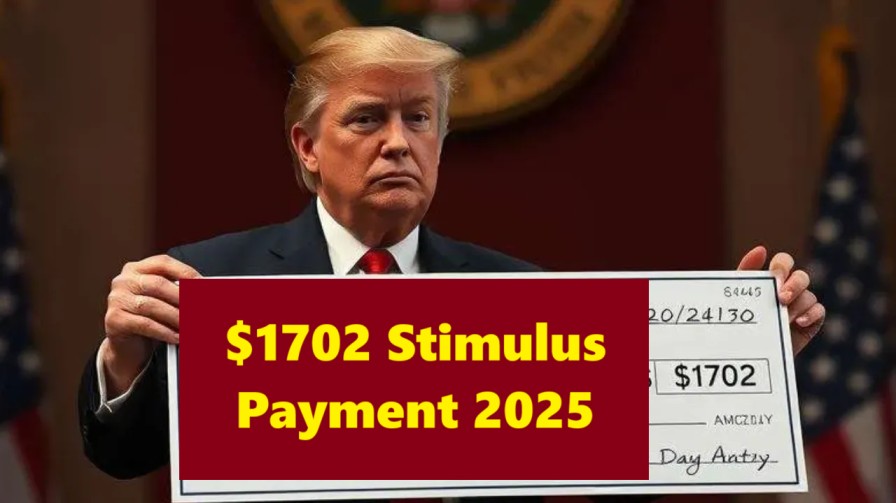The DOGE Stimulus Check: What’s All the Buzz About?
There’s been a lot of talk recently about a potential new $5,000 stimulus check, often referred to as the “DOGE dividend” or “DOGE stimulus check.” While it’s still not approved, the idea has captured attention both in Washington and in online circles. So, what exactly is this proposal, and how likely is it to become a reality? Let’s break it down and see what might be in store.
What’s the DOGE Stimulus Check?
At its core, the DOGE stimulus check is a proposed cash rebate, tied to savings that would be generated by the Department of Government Efficiency Agency (DOGE)—a somewhat mysterious agency reportedly led by none other than Elon Musk. The proposal is simple enough: if DOGE manages to cut $2 trillion in government waste, the plan is to give taxpayers back a portion of those savings, roughly 20%. That’s where the $5,000 figure comes from, which would be the average payout per household, based on the 78 million taxpaying households across the U.S.
This idea came into the spotlight thanks to James Fishback, the CEO of Azoria Investment, who first introduced it. Even former President Donald Trump has shown support, suggesting that such a payment would reward taxpayers by giving them a share of the savings generated by improving government efficiency.
Where Does the Proposal Stand Now?
Turning this idea into something concrete isn’t going to be easy. First, the plan needs approval from Congress to authorize any payouts. And second, the $5,000 payout is contingent on DOGE actually hitting that $2 trillion savings target. So far, DOGE’s efforts have saved around $160 billion. If the savings were distributed today, it would mean about $993 per household—far from the $5,000 goal.
This gap is one of the main hurdles, meaning the idea is still very much in its early stages. There’s a lot of politics and practicalities to navigate before any checks start showing up in mailboxes.
Why Are Some Experts Still Hopeful?
Even with the obstacles, there’s a sense of cautious optimism among some proponents. Fishback has indicated that he’s been in talks with congressional leaders and believes that momentum is starting to build. Financial strategist Andrew Lokenauth pointed out that government projects often outlast leadership changes, meaning the program could still move forward even if Elon Musk steps away from DOGE. There’s a glimmer of hope that this idea has legs.
What Makes This Stimulus Different?
One key difference with the DOGE stimulus is that, unlike the COVID-era checks, this payout wouldn’t be based on individual eligibility criteria. Instead, it would be targeted at households that pay more in taxes than they receive in benefits. The focus is on rewarding net taxpayers, rather than those who are the primary recipients of government aid. It’s more of a one-time dividend tied to savings, rather than a recurring benefit.
Also, for anyone interested in how the U.S. government is doing with stimulus ideas, it’s worth noting that this is a much different approach than what we’ve seen in the past.
So, What’s Next for the DOGE Stimulus?
Right now, there’s no official timeline on when—or if—these payments will be issued. It largely depends on DOGE’s continued efforts to trim waste and whether Congress will pass legislation to make the program official. As we move into spring, keep an eye out for updates as lawmakers continue to review the proposal and its potential impact.
FAQs About the DOGE Stimulus Check
- What exactly is the DOGE stimulus check?
It’s a proposed cash rebate of up to $5,000 per taxpaying household, funded by savings from government efficiency initiatives by the DOGE agency. - Who came up with the DOGE stimulus idea?
James Fishback, CEO of Azoria Investment, is credited with proposing the idea of returning 20% of the savings to taxpayers as a dividend. - Has the DOGE stimulus check been approved?
Not yet. It still needs approval from Congress, and it depends on whether DOGE hits its $2 trillion savings target. - How much has DOGE saved so far?
Around $160 billion, which would translate to about $993 per household if distributed today. - Who qualifies for the DOGE stimulus payment?
Households that pay more in taxes than they receive in benefits would be eligible. The payment would go to the household, not individuals. - Is there a timeline for payment?
Not yet. It depends on DOGE’s progress and legislative action. - Could this plan affect inflation or the economy?
Some experts caution that large stimulus checks could have inflationary effects, but proponents argue that tying the payments to government savings minimizes such risks. - What happens if DOGE doesn’t hit the $2 trillion savings goal?
If DOGE doesn’t reach its savings target, the payments would be smaller, based on the actual savings achieved.
While the DOGE stimulus check is an innovative idea, it still faces significant political and practical hurdles before it can become a reality. But with its unique approach to sharing government efficiency gains directly with taxpayers, it’s definitely a proposal to keep an eye on in the coming months. Whether it turns into the much-talked-about “DOGE dividend” is still to be determined.


